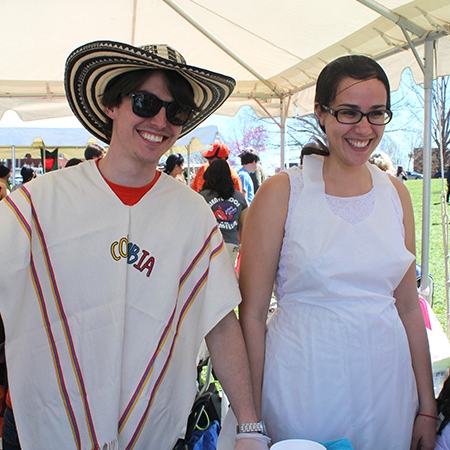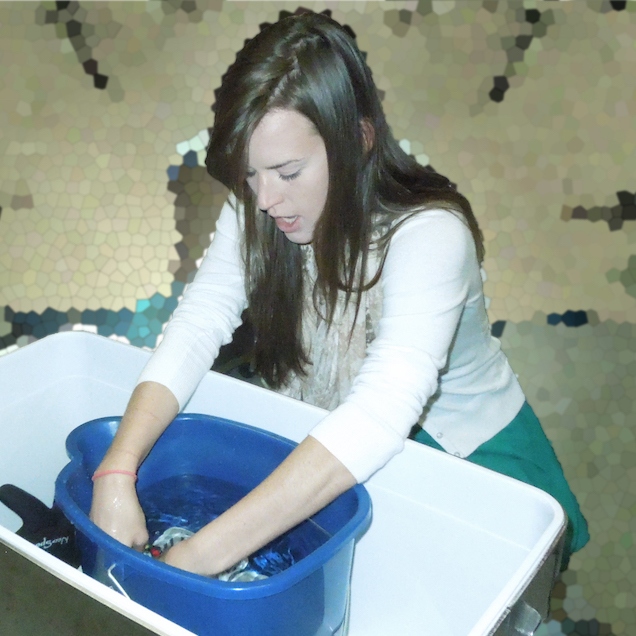The Simple Genetics of Dog Breeding
What happens when you breed purebred dogs? Sometimes the outcome is excellent, but some may be afflicted with one of the more than 600 hereditary diseases that affect dogs. In order to inform breeders about the chances each litter has of inheriting different diseases, genetic counselors must explain complicated genetic equations to dog breeders.
The Creative Inquiry, Genetic Counseling for Dog Breeding, was designed to bridge the gap between the field of genetics and dog breeders. Two Clemson researchers, Dr. Alison Starr-Moss and Dr. Leigh Anne Clark in the Department of Genetics and Biochemistry, have studied canine genetics for fifteen years and spend a lot of time talking to dog breeders.
“When you talk to the dog breeders you realize that the majority of them don’t have a strong grasp on genetics. The breeders are sometimes surprised at what they get when they breed the dogs, so we spend a lot of time explaining how certain genetics works,” Clark said.
The Creative Inquiry project originated with a plan to develop a brochure that clarified the common misconceptions that dog breeders have about genetics. The brochure would help the genetic counselors explain certain concepts using illustrations and Punnett-squares as visual aids. Starr-Moss and the students met with genetic counselor Lori Bassett at the Greenwood Genetics Center to learn how to communicate successfully with dog breeders. Bassett heads the Center’s Communications office and helped the students explain complex genetic equations without the use of medical jargon.
“I have learned about the public and how much they know about genetics. This CI has taught me how to speak to others about genetics in a way that they will understand without having had any genetic education,” Erin Peterson, ajunior genetics major, said.
In order to write the brochure, the students travel to events to interact with breeders and research what they know about genetics. Teaching genetic concepts without the genetics language is, according to Clark, “a lot like the game Taboo, where you have to get the person to say a word without using certain words.”
The students conducted a short survey at the Fall Tailgate for the College of Agriculture, Forestry and Life Sciences and collected data for their brochure by giving attendees “puppy chow” snacks in return for answering basic genetic questions. They also interviewed breeders at a show sponsored by The Atlanta Golden Retriever Club Agility Trial at Clemson’s Garrison Arena.
“The students learned that some breeders don’t want to address genetics, but some breeders are extremely interested about what the students have to say and have questions for them,” Clark said.
Sophomore Genetics major Alex Davis observed, “I’ve learned a lot about the various diseases that breeds of dogs are susceptible to and how very little breeders understand these diseases.”
The students plan to set up a website where visitors may anonymously log in and ask genetics questions. The website would explain concepts in more depth than the brochure.
The students believe that this website will be more effective than the brochure and interviews since some breeders are reluctant to ask questions about genetics and breeding at shows. Next year, Starr-Moss and Clark hope to give their CI students more opportunities to travel and get hands on experience with dog breeders at shows and events.
“One of the problems that we faced in the beginning was when we realized students didn’t know dog breeds,” Clark said. “You can’t send a genetic counselor over to a dog breeder, and have them ask, ‘What kind of dog is that?’ Then you have lost credibility with the dog breeders.”
Clark believes the Creative Inquiry will inform breeders about genetic concepts and give breeders and students the tools for successful communication.
“A lot of what we do is rewarding when we get a chance to talk to breeders, when they actually start to understand what you are trying to explain and you can see that something has just clicked,” Clark said. Once they understand the basic concepts, breeders can see that this is just simple genetics.



